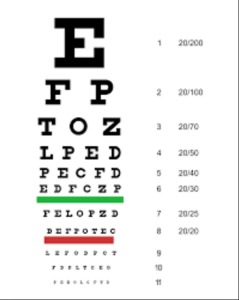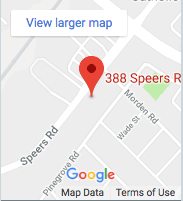Sports vision tests and training help athletes to be their best, whatever the sport. These tests define how well their eyes perform apart from a basic ability to see letters on a standard eye chart.
Athletic performance can be improved by focusing on vision skills such as:
- Hand-eye coordination, to help athletes anticipate and hit a fast-moving ball
- Improved depth-perception to help athletes like downhill skiers negotiate turns and avoid obstacles
- Eye tracking ability, which includes following and anticipating the motion of a bouncing basketball
Types of Sports Vision Tests
Sports vision test assess how well an athlete sees. There are a variety of sports vision tests used, depending on the individual athlete’s needs. A sports vision specialist may assess an athlete’s vision using one or more of the following tests:
Snellen Eye Chart
This is the familiar eye chart that involves reading lettering on a chart 20 feet away. The lettering becomes increasingly smaller and you are asked to read until you can no longer correctly identify the symbols on a line.
Many sports vision specialists find that young athletes have undetected refractive error that could adversely affect their performance.
Contrast Sensitivity Tests
There are different tests used to assess contrast sensitivity (trouble seeing high contrast objects against a similar background, especially in low-light conditions). A common approach involves matching the orientation of parallel gray stripes against backgrounds that gradually begin to match the shade of the stripes.
If you have poor contrast sensitivity, you could be fitted with glasses with specific lens tints that help to increase visibility. However, not all sports vision experts agree that these lens tints are helpful for everyone.
Eye Tracking Devices
Various high tech methods are used to assess and improve how well your eyes follow moving objects. One is a computer system where your eyes follow motion on a screen. Another involves mechanical rotation devices resembling record players on which targets move in a circular pattern.
Ocular Alignment Tests
Cover tests establish how well both eyes are aligned and working together. An eye doctor uses techniques like covering one eye to see how the other eye responds to visual stimuli, then uncovering both eyes and observing how they respond to the same stimuli.
Eye Dominance Tests
A simple way to find out which eye is your dominant one is to form a triangle with your fingers and frame an object while you look at it with both eyes. By closing one eye and then the other, you can identify which eye is dominant as the one that maintains a stable view of the framed object.
Other sports vision tests used include:
- Depth perception measurements
- Assessments of visual processing speed and hand-eye co-ordination
- Eye teaming tests (how your eyes work together as a team)


